Summer is winding down so if you haven’t gone camping yet, consider these spots if you’re looking for unforgettable outdoor experiences and a chance to connect with nature. Whether you crave the serenade of flowing creeks or the tranquility of forests, this blog is your ultimate guide. From breathtaking scenery to meticulously maintained facilities, each campground offers unique highlights that set them apart. Let’s explore our top 10 favorite campgrounds near Portland.
#1 Columbia River RV Park
Located 10 miles north of downtown, Columbia River RV Park is a premier site for RV campers. All comforts of home are offered in this well-appointed park for a comfortable stay.
There are plenty of spacious sites with full hookups, on-site laundry facilities, Wi-Fi, a recreation room, showers, and clean restrooms. Moreover, over-35’ and pull-through sites are available, and extra-long RVs are welcome.
One main highlight of this RV park is its proximity to some of the top attractions in Portland, including Owens Sports Complex, Columbia Children’s Arboretum Park, and Portland International Raceway. Daily rates are $46 (economy, small, medium, and large sites) and $52 (pull-through and premium sites).
#2 Barton Park Campground
To those who want to take a break from the busy city and get reconnected with nature, Barton Park Campground which is located on Clackamas River is the ideal destination. The campground has 112 campsites, including 103 sites with electric and water hookups.
Aside from camping, this unique park features hiking, event amenities, multi-day use amenities, and various river recreation opportunities. A boat ramp, picnic tables, a playground, fire rings, flush toilets, a dump station, showers, restrooms, and drinking water are available within the campground.
Families with kids can enjoy a game of horseshoes. The park is also a favorite spot for hiking, boating, and fishing. Campsite rates range from $21 to $81 per night.
#3 Cascade Locks/Portland East KOA Holiday
Cascade Locks KOA, nestled in the heart of Columbia River Gorge National Scenic Area, is a haven for outdoor enthusiasts looking for an unforgettable camping experience. This campground, with its prime location and modern amenities, provides a relaxing atmosphere and easy access to countless exciting activities and natural wonders.
The campground boasts forested tent sites, cabins, deluxe cabins, and full hookup RV sites. Firewoods, bike rentals, a pool, propane, Wi-Fi, cable TV, a hot tub/sauna, laundry facilities, a gift shop, and a playground are available in the campground.
Campers can enjoy activities in the nearby canyon which includes fishing and hiking. Campsite rates start at $37 avg/night.
#4 Ainsworth State Park Campground
With 6 walk-in tent sites and 42 full hookups campsites for trailers, RVs, and tents, Ainsworth State Park Campground is a hiker’s paradise and tranquil retreat with breathtaking waterfalls. Open mid-March through October, the park is surrounded by mature trees, providing shade for a cozy and comfortable stay.
Campsites are equipped with picnic tables and fire rings. An RV dump station, hot showers, flush toilets, firewood, drinking water, and a playground are also available within the campground. Outdoor recreations include fishing, windsurfing, hiking, kayaking, and biking.
This campground serves as a convenient base when you’re looking to explore the Columbia River Gorge and the area’s historic sites. Campsite fees range from $17 to $26 per night.
#5 Champoeg State Heritage Area Campground
Featuring a distinct combination of recreation, history, and nature, Champoeg State Heritage Areaoffers a scenic landscape of a bygone era. The campground has 81 campsites, including 21 full hookup sites, 54 partial hookup sites, and 6 walk-in tent sites.
There are also 6 cabins, 6 yurts, 3 group tent sites, a bicyclist/hiker camp, and a group RV loop. Hot showers, flush toilets, a dump station, hiking trails, exhibit information, bike paths, disc golf, and an amphitheater can be found in the area. Aside from the hiking trails, there are several historic buildings you can explore.
Champoeg State Heritage Area’s ecologically rich surroundings house over 130 bird species making it an ideal location to appreciate wildlife. This is also the site where the first provisional government in Oregon was formed. Campsite fees range from $21 to $58 per night.
#6 Wyeth Campground
An hour away east of Portland, Wyeth Campground offers 3 group sites and 13 individual sites in a beautiful camping spot surrounded by towering trees. Due to its location, outdoor recreational opportunities are abundant, including scenic drives, hiking, fishing, and exploring historic sites.
Each site includes a fire grill and picnic table. Only small RVs and trailers (less than 30 feet in length) are allowed and there are no hookups available. The campground has flush toilets, hot and cold water, tent pads, potable water, and showers.
The campground is popular in the area so make sure to reserve early. The camping fee is $20/night for one vehicle and single unit and $30/night for a group site.
#7 Gone Creek Campground
Sitting on the edge of Timothy Lake, Gone Creek Campground is surrounded by green, lush forest. This campground has 49 campsites for trailers, RVs, and tents, including 18 pull-through sites.
Water activities like boating, fishing, and kayaking as well as hiking and horseback riding are popular activities in the campground. There are no hookups but each site has a fire ring with a grill and picnic table. Other facilities include a boat ramp, vault toilets, and drinking water.
With its proximity to the lake and other historic buildings in the area, the campground is a popular destination for visitors and locals alike, so make sure to reserve a site ahead of time. Daily/nightly campsite rates range from $26 to $52.
#8 Bayport RV Park and Campground
Bayport RV Park and Campground, adjacent to Scappoose Bay Marine Park, is an idyllic spot that attracts campers with its myriad of activities and scenic surroundings. This campground has 23 RV sites and tents are allowed on paved/gravel areas only.
All sites are 25’ wide and have electricity and water hookups. Park amenities include showers, restrooms, Wi-Fi, and an automated RV dump station. The boat launch fee is included with your site rental but overnight moorage is $17 per night. For those who prefer to stay on dry land, there’s a paved nature trail you can explore or you can just relax on the shore and enjoy the breathtaking sunset.
On the other hand, the campground is a paradise for water lovers. With its proximity to the bay, boating, kayaking, stand-up paddleboarding, and fishing is just a stone’s throw away. Rates are $30 per night.
#9 L.L. Stub Stewart State Park Campground
Just over 30 miles west of Portland, L.L. Stub Stewart State Park Campground offers the best backyard camping experience. With its numerous trails and variety of camping opportunities, this campground boasts 78 full hookups RV sites, 15 cabins, 12 walk-in tent sites, and universal access to several sites and cabins at Dairy Creek.
Each campsite is equipped with a fire ring and table. The campground has flush and vault toilets, drinking water, a playground, hot showers, a visitor center, two reservable meeting halls, and an open picnic shelter. Some of the sites have good shade but all of them are paved.
Outdoor recreation activities include hiking, horseback riding, mountain biking, wildlife viewing, and disc golf. Campsite rates start at $11 per night.
#10 Mt. Hood Village RV Resort
Known as Oregon’s premier RV resort, Mt. Hood Village offers a variety of rental accommodations and over 300 wooded RV sites. This particular spot is the ideal destination for all kinds of retreats, large family gatherings, or a simple weekend getaway in the mountains.
Each RV site is equipped with a fire pit, picnic table, and either full or partial hookups. Other rentals like yurts, cabins, tiny houses, and cottages have modern amenities like kitchen appliances, fully equipped baths, BBQ grills, and extended outdoor space. A store, clubhouse, library, game room, playground, fitness center, restaurant, spa/hot tub, WiFi, shower/restroom facilities, laundry facilities, biking trails, and hiking trails in the park.
Explore beyond the campground and immerse yourself in the natural beauty of Mt. Hood National Forest. Popular activities include rock climbing and fishing. The site rates range from $70 to $209 per night.
Takeaway
So there you have it, our top 10 best spots for camping around Portland. We hope our guide has given you insightful ideas and inspiration for your upcoming holiday, whether you’re looking for picturesque lakeside views or family-friendly amenities.
The best thing, though? You are welcome to bring your four-legged companions along for the adventure at any of these campgrounds. Go forth and embrace the wonders that await in these boundaries. Happy camping!









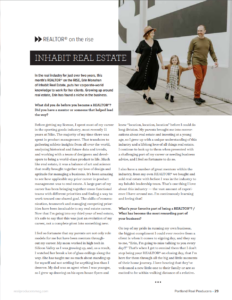







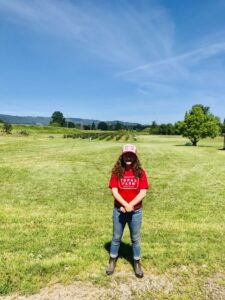

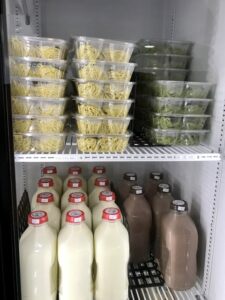



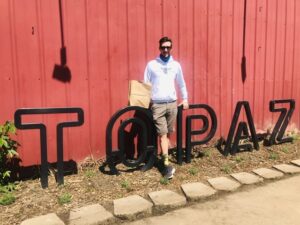


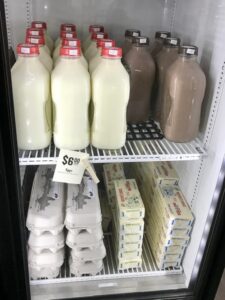

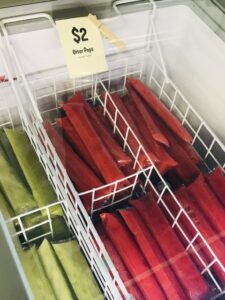

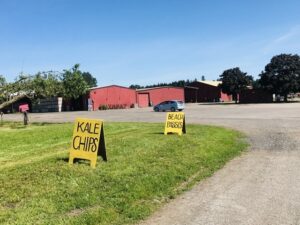
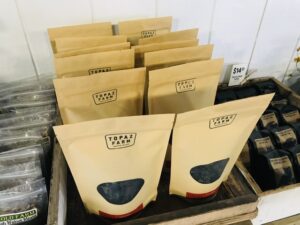

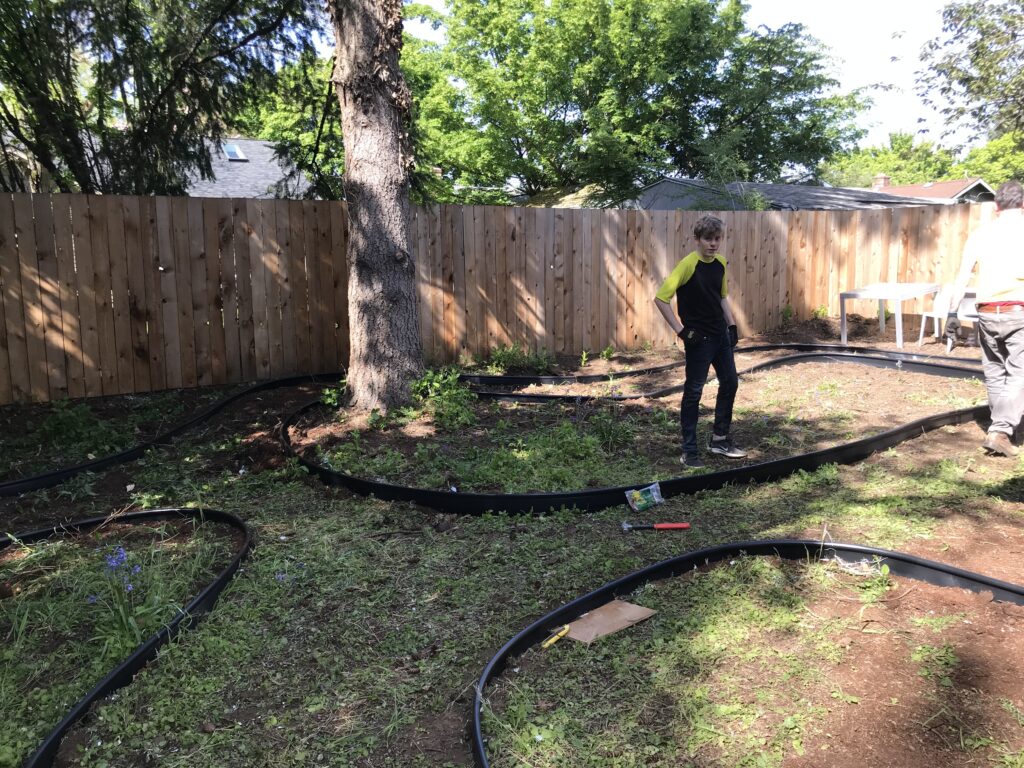

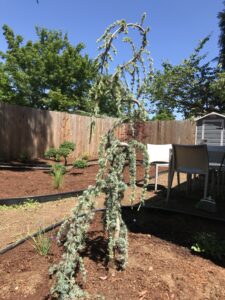 Now it was time for some of the planting fun! We chose a few beauties to be focal points in the garden, including a Japanese maple, weeping blue cedar, bonsai and a pink hydrangea and rhododendron. Additionally, we planted a handful of ferns and grasses in groups of 3. We are fans of not over planting and giving everything room to grow. These were purchased from multiple Eastside businesses including
Now it was time for some of the planting fun! We chose a few beauties to be focal points in the garden, including a Japanese maple, weeping blue cedar, bonsai and a pink hydrangea and rhododendron. Additionally, we planted a handful of ferns and grasses in groups of 3. We are fans of not over planting and giving everything room to grow. These were purchased from multiple Eastside businesses including 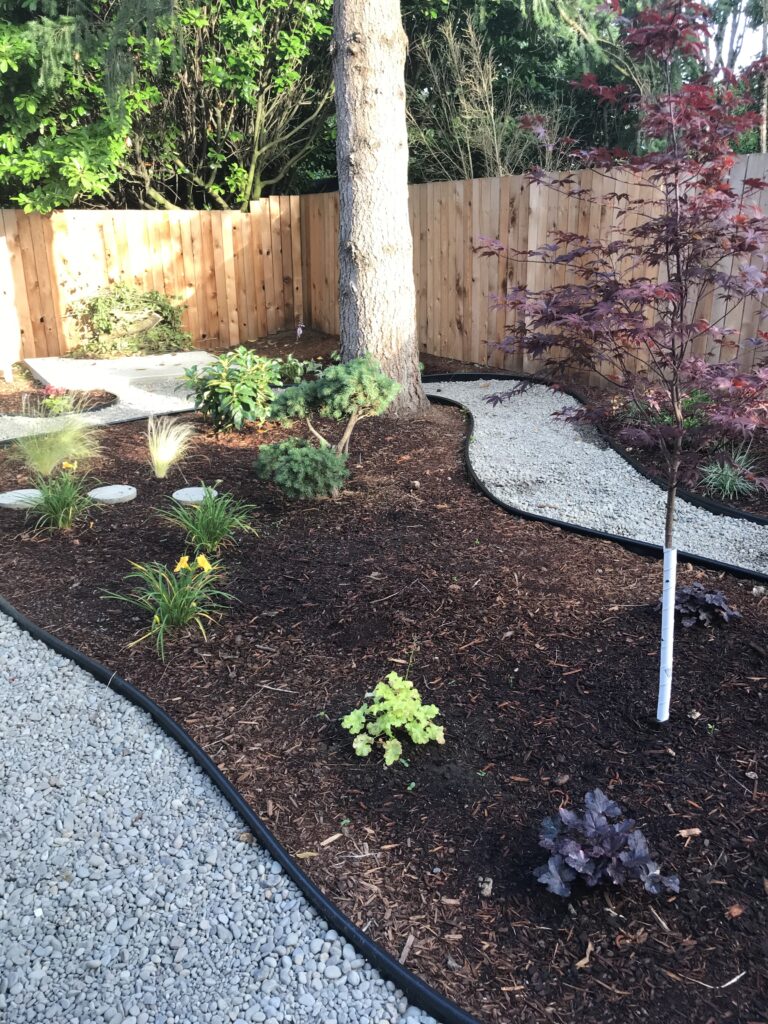 With the plants in place, it was time to purchase mulch and rock. Lucky for us, fabulous
With the plants in place, it was time to purchase mulch and rock. Lucky for us, fabulous 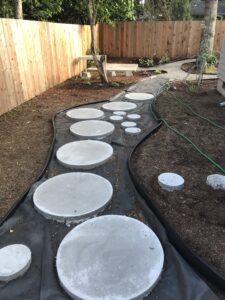 One of our final tasks on the project was to produce our own concrete circles in the path. My partner had a bit of experience working with concrete from his previous house, and he was excited to put his cement mixer to use again. To create the large circles, he constructed molds out of fiberboard and we placed them in the empty path. Then the concrete was mixed and poured in multiple batches. We made the small circles off to the side and simply placed them in the path after they were dry, and then finished filling in the river rock.
One of our final tasks on the project was to produce our own concrete circles in the path. My partner had a bit of experience working with concrete from his previous house, and he was excited to put his cement mixer to use again. To create the large circles, he constructed molds out of fiberboard and we placed them in the empty path. Then the concrete was mixed and poured in multiple batches. We made the small circles off to the side and simply placed them in the path after they were dry, and then finished filling in the river rock. 


 In-person tours are still an option in many cases when necessary, but with precautions we take very seriously. We recommend live video tours for anyone that has cold or flu symptoms or concerned about a possible COVID-19 exposure. This goes for clients, as well as, agents. Our agents are following the recommended 6 ft of social distancing and strict hand-washing and disinfecting policies. Our agents provide our COVID-19 Safe Showing policies to clients for review prior to visiting any property in-person so you can make the best decision for your health and safety.
In-person tours are still an option in many cases when necessary, but with precautions we take very seriously. We recommend live video tours for anyone that has cold or flu symptoms or concerned about a possible COVID-19 exposure. This goes for clients, as well as, agents. Our agents are following the recommended 6 ft of social distancing and strict hand-washing and disinfecting policies. Our agents provide our COVID-19 Safe Showing policies to clients for review prior to visiting any property in-person so you can make the best decision for your health and safety. We are a small business that puts the care of our clients and agents first. I started this company six years ago because I knew there was a better, more innovative way to serve clients. This is an industry that one-size definitely does not fit all. Inhabit has always been forward-looking and our size allows us to be nimble in creating services that address changing needs and goals. We are here to give you the best real estate advice possible, now and into the future.
We are a small business that puts the care of our clients and agents first. I started this company six years ago because I knew there was a better, more innovative way to serve clients. This is an industry that one-size definitely does not fit all. Inhabit has always been forward-looking and our size allows us to be nimble in creating services that address changing needs and goals. We are here to give you the best real estate advice possible, now and into the future.
 And just like that, it’s February 2020. If someone asked you when you were a kid what you thought 2020 would look like, did you picture this? I visualized space travel, robots, flying cars, lasers and futuristic stuff…not this everyday adulty life gig.
And just like that, it’s February 2020. If someone asked you when you were a kid what you thought 2020 would look like, did you picture this? I visualized space travel, robots, flying cars, lasers and futuristic stuff…not this everyday adulty life gig. prices” part though. Affordability is a major concern. The chasm between the cost of Portland real estate and our median household income seems to be growing. Jobs are coming but wages haven’t caught up and the cost of living keeps climbing. This pushes buyers to outlier markets (Vancouver, Milwaukie, Beaverton, Oregon City, etc). For the urbanites that don’t want to pay for the high priced houses but want to stay in town, they’ll drive demand in the ‘attached’ market (townhouses/condos) which had a slow 2019. This will stabilize pricing in the attached market. Properly priced, well-presented, detached houses from the $200k to $1m range will continue to fly off the shelf. The $1m-$1.5m market is a ‘move up’ market for many wanting to upgrade from their existing home . This market presents opportunities for buyers to make a great purchase; however, tapping their “trapped equity” from their existing home in order to make this purchase can present challenges (certainly not insurmountable but can be daunting to the client). In surprising fashion, Portland’s upper end market ($1.5m +) is moving at a pace you may find interesting (fast). Of course, these properties need to deliver the full package to fetch the price, but this market segment seems very confident in Portland as a place to make these big purchases. I find these big numbers surprising as I clearly remember how freaked out I was when I bought my first house in Mt. Tabor for $185k. However, like many other places, we are bursting at the seams. The numbers for incoming population growth are staggering which in real estate economics translates to demand. Portland is in high demand which has all but diminished the lower end of the market and made it feel normal to buy and sell very expensive real estate.
prices” part though. Affordability is a major concern. The chasm between the cost of Portland real estate and our median household income seems to be growing. Jobs are coming but wages haven’t caught up and the cost of living keeps climbing. This pushes buyers to outlier markets (Vancouver, Milwaukie, Beaverton, Oregon City, etc). For the urbanites that don’t want to pay for the high priced houses but want to stay in town, they’ll drive demand in the ‘attached’ market (townhouses/condos) which had a slow 2019. This will stabilize pricing in the attached market. Properly priced, well-presented, detached houses from the $200k to $1m range will continue to fly off the shelf. The $1m-$1.5m market is a ‘move up’ market for many wanting to upgrade from their existing home . This market presents opportunities for buyers to make a great purchase; however, tapping their “trapped equity” from their existing home in order to make this purchase can present challenges (certainly not insurmountable but can be daunting to the client). In surprising fashion, Portland’s upper end market ($1.5m +) is moving at a pace you may find interesting (fast). Of course, these properties need to deliver the full package to fetch the price, but this market segment seems very confident in Portland as a place to make these big purchases. I find these big numbers surprising as I clearly remember how freaked out I was when I bought my first house in Mt. Tabor for $185k. However, like many other places, we are bursting at the seams. The numbers for incoming population growth are staggering which in real estate economics translates to demand. Portland is in high demand which has all but diminished the lower end of the market and made it feel normal to buy and sell very expensive real estate.  Even though we’re not living in the Jetson-like society that I envisioned as a kid, 2020 is chock full of new and exciting stuff: self-parking, electric cars, virtual reality, and an impressive (and concerning) amount of technology & connectivity. At the push of a button, you can have almost anything you want delivered to your doorstep within hours. Heck, you can push a button and order up a random Realtor to open up a house for you (but how dare you do that!). Real estate is no exception to the expectation of today’s “now society”. As professionals, our response time must be faster, our knowledge deeper and our ability to navigate this market must be sharp and focused. One thing that technology can’t change, is the human factor that is necessary to create happy buyers and happy sellers in real estate transactions. This is our wheelhouse. We embrace today’s disruptions & technology and use them as tools to enhance our clients’ position and experience; however, we feel more strongly than ever that real estate is a people business and we are here to stay.
Even though we’re not living in the Jetson-like society that I envisioned as a kid, 2020 is chock full of new and exciting stuff: self-parking, electric cars, virtual reality, and an impressive (and concerning) amount of technology & connectivity. At the push of a button, you can have almost anything you want delivered to your doorstep within hours. Heck, you can push a button and order up a random Realtor to open up a house for you (but how dare you do that!). Real estate is no exception to the expectation of today’s “now society”. As professionals, our response time must be faster, our knowledge deeper and our ability to navigate this market must be sharp and focused. One thing that technology can’t change, is the human factor that is necessary to create happy buyers and happy sellers in real estate transactions. This is our wheelhouse. We embrace today’s disruptions & technology and use them as tools to enhance our clients’ position and experience; however, we feel more strongly than ever that real estate is a people business and we are here to stay. 

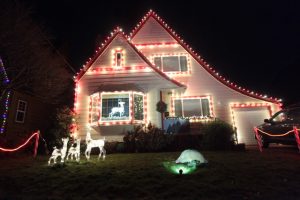
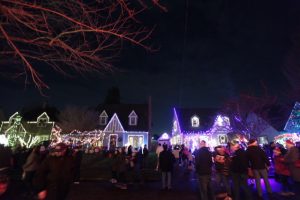 Another thing that makes it totally Portland is that a lot of times, when someone buys a home there, the people selling the home will pass their decorations along to the new buyers. But like I said, one of the things that makes it so very not like Portland is holy crap, it’s crowded! At least for the second half of December. The cops block off the street to car traffic now, which I guess makes it even more Portland. If you live on Peacock Lane and you have an emergency at 5:30 on a December evening –– like you’ve run out of kombucha or something –– you’re sure as heck not getting in your car to get more. I mean, not like you have to. There’s a Walgreen’s right down at the end of the block where, yes, last time I checked they sell kombucha. There’s also a weed dispensary around the corner which used to be this place called Immortal Piano –– broke my heart when it closed because, with a name like Immortal Piano…
Another thing that makes it totally Portland is that a lot of times, when someone buys a home there, the people selling the home will pass their decorations along to the new buyers. But like I said, one of the things that makes it so very not like Portland is holy crap, it’s crowded! At least for the second half of December. The cops block off the street to car traffic now, which I guess makes it even more Portland. If you live on Peacock Lane and you have an emergency at 5:30 on a December evening –– like you’ve run out of kombucha or something –– you’re sure as heck not getting in your car to get more. I mean, not like you have to. There’s a Walgreen’s right down at the end of the block where, yes, last time I checked they sell kombucha. There’s also a weed dispensary around the corner which used to be this place called Immortal Piano –– broke my heart when it closed because, with a name like Immortal Piano…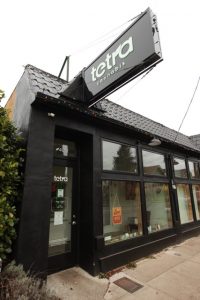
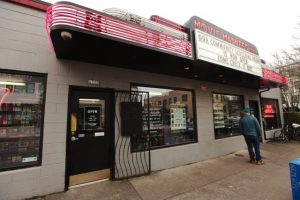 So I know what you’re thinking. You’re thinking, “Well, Brian, that’s all super interesting. Do houses on Peacock Lane cost more than equivalent houses a block or so away?”
So I know what you’re thinking. You’re thinking, “Well, Brian, that’s all super interesting. Do houses on Peacock Lane cost more than equivalent houses a block or so away?”
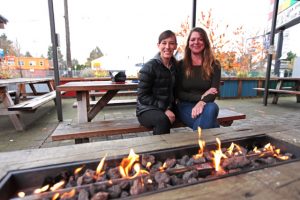
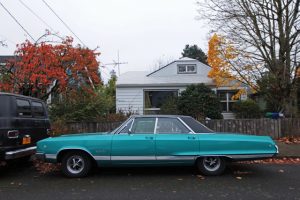
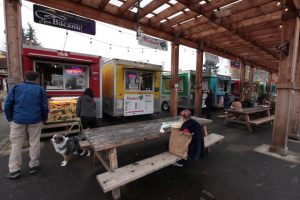
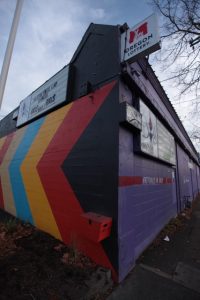
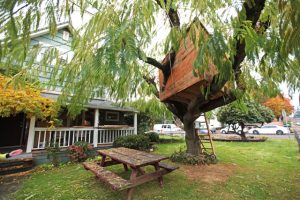
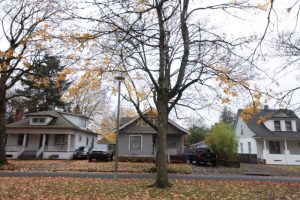
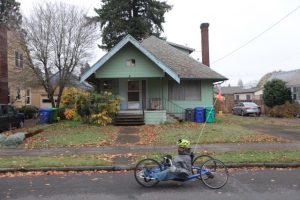 As I mentioned in another post, in Portland we have 20 blocks to a mile so even if you’re out by 82nd, you’re within biking distance of downtown. And it’s a nice ride, too, through Clinton, Ladd’s Addition, and over the Hawthorne bride. You can’t even get lost. Just follow the thousands of other bike commuters making the same trip. It’s a good ride back home. Short enough to do it every day. Strenuous enough that you can justify …you know where I’m going with this …
As I mentioned in another post, in Portland we have 20 blocks to a mile so even if you’re out by 82nd, you’re within biking distance of downtown. And it’s a nice ride, too, through Clinton, Ladd’s Addition, and over the Hawthorne bride. You can’t even get lost. Just follow the thousands of other bike commuters making the same trip. It’s a good ride back home. Short enough to do it every day. Strenuous enough that you can justify …you know where I’m going with this …

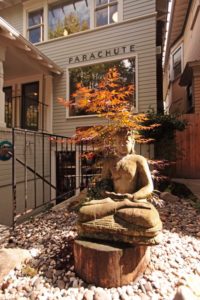
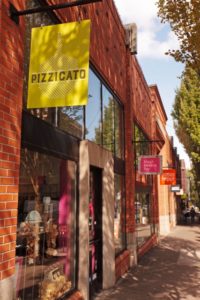
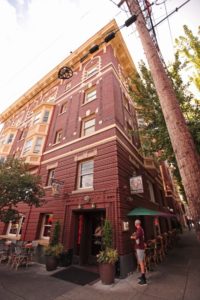
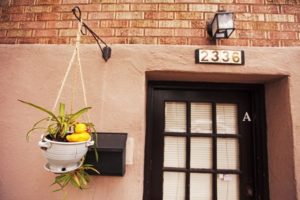 As you can tell from the address, NW 23rd is 23 blocks from the Willamette River, which is just over a mile (blocks in Portland are shorter than they are in a lot of other cities). In between, you have non-stop interesting stuff: NW 21st is kind of the Clinton to 23rd’s Division (see my post on Division here, and on Clinton here). They’re super close, but different enough that people who live there tend to identify with one or the other.
As you can tell from the address, NW 23rd is 23 blocks from the Willamette River, which is just over a mile (blocks in Portland are shorter than they are in a lot of other cities). In between, you have non-stop interesting stuff: NW 21st is kind of the Clinton to 23rd’s Division (see my post on Division here, and on Clinton here). They’re super close, but different enough that people who live there tend to identify with one or the other.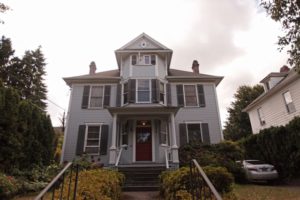
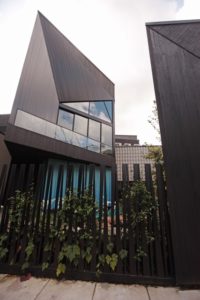

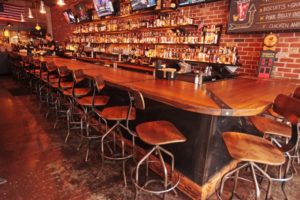


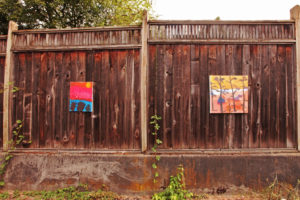
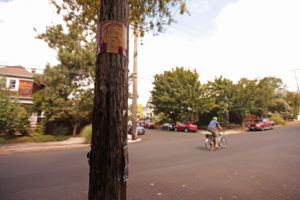
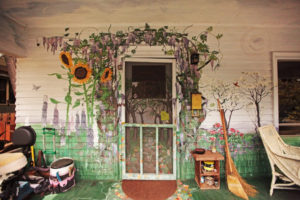
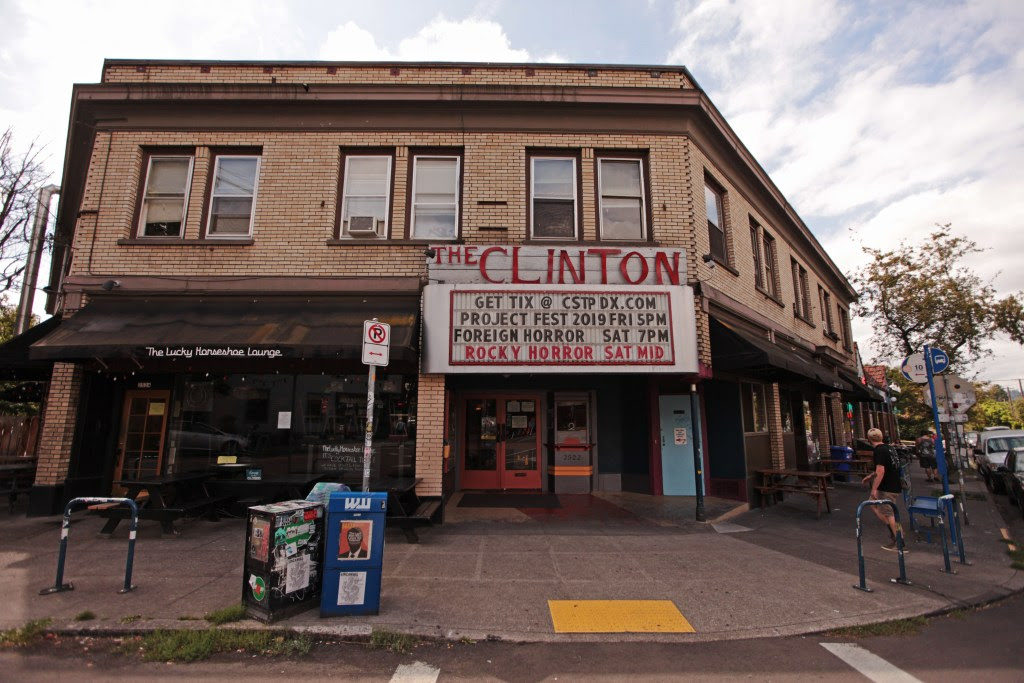
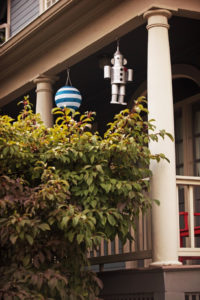 I’ve already gone on about Division (
I’ve already gone on about Division (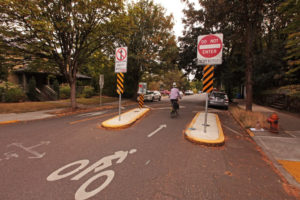
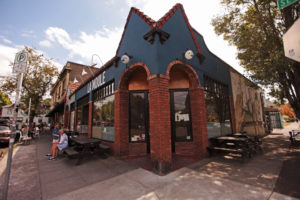
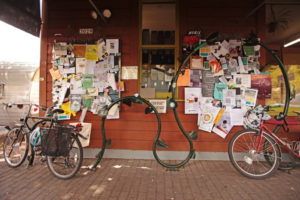 You also have two optometrists, a boutique that sells kid stuff …even two real estate offices.
You also have two optometrists, a boutique that sells kid stuff …even two real estate offices.
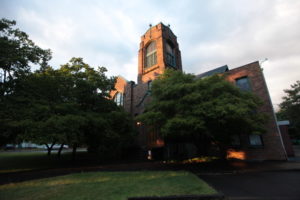
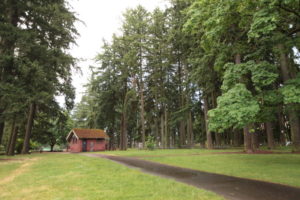
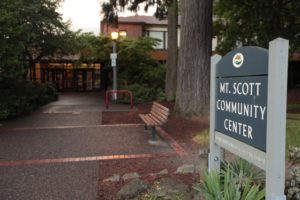 Okay, I lied. The Mt. Scott community Center is the centerpiece of the neighborhood. It’s adjacent to or maybe in the park and has two swimming pools – one that’s great for lap swimming and water aerobics and the other that’s built just for kids, with a slide, whirlpool, buckets that splash water on top of you, and a wading area that graaaaaaaadually gets deeper and deeper until the water comes all the way up to your knee.
Okay, I lied. The Mt. Scott community Center is the centerpiece of the neighborhood. It’s adjacent to or maybe in the park and has two swimming pools – one that’s great for lap swimming and water aerobics and the other that’s built just for kids, with a slide, whirlpool, buckets that splash water on top of you, and a wading area that graaaaaaaadually gets deeper and deeper until the water comes all the way up to your knee.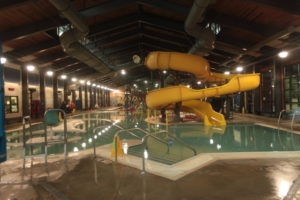
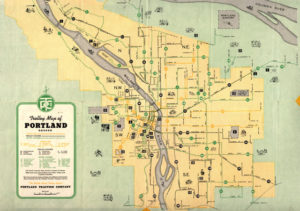 I was also told that the Arleta Triangle, a weird orphan of land that’s cut off from the southwest corner of the park at SE 72nd and Woodstock, came about because trolley tracks were laid to cut the corner of the park, leaving a little triangle of land all sad and lonely out there in the middle of the intersection. It sounds convincing, but according to the 1942 trolley route map I dug up, the trolley didn’t go anywhere near that corner. And also, it wasn’t called the Mt. Scott Trolley.
I was also told that the Arleta Triangle, a weird orphan of land that’s cut off from the southwest corner of the park at SE 72nd and Woodstock, came about because trolley tracks were laid to cut the corner of the park, leaving a little triangle of land all sad and lonely out there in the middle of the intersection. It sounds convincing, but according to the 1942 trolley route map I dug up, the trolley didn’t go anywhere near that corner. And also, it wasn’t called the Mt. Scott Trolley.

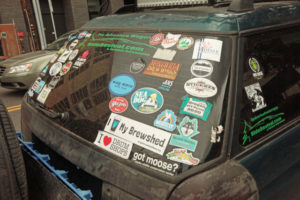 The timing was perfect for hippies. San Francisco was getting pricey. So tons of them hitchhiked up north to a land where you could drive a VW bus 20 minutes in almost any direction and find yourself in a gloriously beautiful setting –– you could take a quick hike through misty woods, pluck a couple of psychedelic mushrooms, and bliss out naked in a hot spring.
The timing was perfect for hippies. San Francisco was getting pricey. So tons of them hitchhiked up north to a land where you could drive a VW bus 20 minutes in almost any direction and find yourself in a gloriously beautiful setting –– you could take a quick hike through misty woods, pluck a couple of psychedelic mushrooms, and bliss out naked in a hot spring.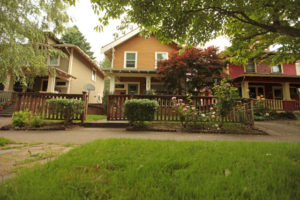 The hippies turned their craftsman houses into goat barns, pottery studios, rooming houses, and mini ashrams. They didn’t have the money (or inclination) to tear the houses down and build modern houses, but they put enough love and care into them to keep them from falling completely apart.
The hippies turned their craftsman houses into goat barns, pottery studios, rooming houses, and mini ashrams. They didn’t have the money (or inclination) to tear the houses down and build modern houses, but they put enough love and care into them to keep them from falling completely apart.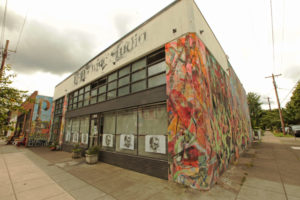 About 15 years ago, I can’t remember who, but some adventurous chef decided to open a restaurant on SE Division, driven mostly by how inexpensive the property was. The restaurant became a media darling and other chefs came in with their restaurants. Soon Division became a culinary destination. That’s about the time that I moved into the neighborhood. I used to walk five blocks to Pok Pok, sit down, and have a great lunch. Now you have to wait in line for an hour to get in.
About 15 years ago, I can’t remember who, but some adventurous chef decided to open a restaurant on SE Division, driven mostly by how inexpensive the property was. The restaurant became a media darling and other chefs came in with their restaurants. Soon Division became a culinary destination. That’s about the time that I moved into the neighborhood. I used to walk five blocks to Pok Pok, sit down, and have a great lunch. Now you have to wait in line for an hour to get in.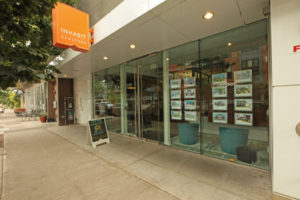
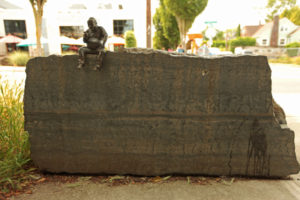 Division is super close to downtown. You just hop on your bike and pedal thirty some-odd blocks and you’re at the river. Take the Hawthorne Bridge across and bam, you’re there. Bonus, Hawthorne is about a half mile to the north and Clinton is two blocks south and a little west. Getting to the airport is pretty easy, too. Just head east to the 205 Freeway and go north. It used to take me 20 minutes. I suppose now it’s 35 when there’s traffic.
Division is super close to downtown. You just hop on your bike and pedal thirty some-odd blocks and you’re at the river. Take the Hawthorne Bridge across and bam, you’re there. Bonus, Hawthorne is about a half mile to the north and Clinton is two blocks south and a little west. Getting to the airport is pretty easy, too. Just head east to the 205 Freeway and go north. It used to take me 20 minutes. I suppose now it’s 35 when there’s traffic.